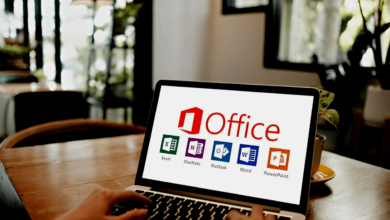How to Build a Personal Brand Online: Step-by-Step Guide
Personal branding strategy decoded. Build authority, attract opportunities & grow your influence online with this actionable step-by-step guide.

Building a personal brand online is essential in today’s digital world, whether you’re an entrepreneur, freelancer, or professional looking to establish credibility. A strong personal brand helps you stand out, attract opportunities, and build trust with your audience. This comprehensive guide will walk you through the steps to create and grow a powerful online presence that reflects your expertise and values.
In conclusion, developing a personal brand online requires consistency, authenticity, and strategic effort. By defining your niche, creating valuable content, and engaging with your audience, you can establish a strong digital footprint that opens doors to new opportunities. Stay committed to your brand’s growth, adapt to changes, and watch as your influence expands over time.
How to Build a Personal Brand Online
In the digital age, your online presence is often the first impression you make. Whether you’re a business professional, creative, or entrepreneur, a well-crafted personal brand online can set you apart from the competition. This guide will take you through every step needed to build a compelling and authentic personal brand that resonates with your audience.
Define Your Brand Identity
Before you start posting online, you need a clear understanding of who you are and what you represent. Your personal brand should reflect your values, expertise, and unique perspective. Start by asking yourself key questions: What are your strengths? What problems can you solve for others? Who is your target audience? Your answers will shape your brand’s voice, messaging, and visual identity.
Create High-Quality Content Consistently
Content is the foundation of your personal brand online. Whether it’s blog posts, videos, podcasts, or social media updates, your content should provide value to your audience. Share insights, tell stories, and showcase your expertise. Consistency is key—develop a content calendar to maintain a steady posting schedule. Over time, this will help you build authority and keep your audience engaged.
Engage with Your Audience
Building a personal brand isn’t just about broadcasting – it’s about creating meaningful two-way conversations. Respond thoughtfully to comments and messages within 24 hours to show your audience they matter. Ask open-ended questions in your captions and posts to spark discussions and gather insights. Go beyond likes by sharing user-generated content and giving shoutouts to engaged followers. Host live Q&As or polls to make your audience feel heard and valued. Remember their preferences and reference past interactions to deepen connections. Authentic engagement transforms passive followers into loyal brand advocates who amplify your message.
Choose the Right Platforms
Not all social media platforms are suitable for every personal brand. LinkedIn is ideal for professionals and B2B networking, while Instagram and TikTok work well for visual and creative brands. YouTube is perfect for long-form content, and Twitter (X) is great for thought leadership. Focus on platforms where your audience is most active and where your content will have the most impact.
Optimize Your Online Profiles
Your digital profiles serve as the foundation of your personal brand – they should instantly communicate your expertise, personality, and value. Start by crafting a compelling bio that blends professionalism with approachability, using strategic keywords for discoverability. Select a high-quality, consistent profile photo across all platforms that reflects your brand aesthetic. For LinkedIn, optimize your headline to go beyond job titles by highlighting what problems you solve. On Instagram/Twitter, use relevant hashtags and a trackable link in your bio.
Don’t overlook the details: Pin important posts or projects, organize website/portfolio links strategically, and enable the “Open to Work” feature if applicable. For YouTube/TikTok, create branded channel art and organize content into playlists by topic. Regularly audit your profiles to remove outdated information and refresh with recent achievements.
Leverage SEO for Visibility
To maximize your personal brand’s discoverability, strategically incorporate relevant keywords into your website, blog, and social profiles. Research long-tail phrases your audience searches for and naturally weave them into high-quality content. Optimize meta titles, descriptions, and image alt text to improve search rankings. Build backlinks through guest posts, collaborations, and valuable shareable content. Regularly update older posts with fresh information to maintain SEO relevance. Monitor performance using tools like Google Analytics to refine your strategy. Strong SEO turns your digital presence into a 24/7 lead generator.
Network and Collaborate
Building a strong personal brand isn’t a solo journey—it thrives on meaningful connections. Seek out industry peers, mentors, and influencers who align with your values and goals. Engage authentically by commenting on their content, sharing insights, and offering value before asking for favors. Attend virtual events, webinars, and conferences to expand your network and visibility. Collaborate on projects, guest posts, or joint live sessions to tap into new audiences. Nurture these relationships with consistency and reciprocity, not just when you need something. The right partnerships can amplify your reach, credibility, and opportunities in ways you can’t achieve alone.
Monitor and Adapt Your Strategy
Track your performance using analytics tools to identify what content resonates most with your audience. Pay attention to engagement metrics like likes, shares, and comments to refine your approach. Stay updated on industry trends and adjust your strategy to remain relevant. Experiment with new content formats and platforms to see what works best. Regularly review your goals and pivot if needed to maintain growth. A flexible, data-driven strategy ensures your personal brand stays dynamic and impactful.
Be Authentic and Patient
Authenticity builds trust—people connect with real stories, not polished perfection. Stay true to your values, voice, and vision instead of copying others. Patience is key because a strong personal brand grows gradually, not overnight. Stay consistent, trust the process, and your influence will expand organically over time.
Conclusion
Building a personal brand online is a powerful way to establish credibility, showcase your expertise, and create meaningful connections in the digital world. By following the steps outlined in this guide—defining your brand identity, creating valuable content, engaging with your audience, and optimizing your online presence—you can craft a strong and authentic personal brand that stands out. Remember, consistency and authenticity are key; your brand should reflect who you truly are while providing value to your audience.
As you continue to grow your personal brand online, stay adaptable and open to learning. The digital landscape evolves constantly, and so should your strategy. Whether you’re aiming to advance your career, grow a business, or simply share your passion with the world, a well-built personal brand will open doors to new opportunities. Stay patient, keep refining your approach, and watch as your influence expands over time. Your brand is your legacy—make it count.
FAQs
Why is a personal brand important?
A personal brand establishes credibility, differentiates you from competitors, and helps attract career or business opportunities.
How long does it take to build a personal brand?
It varies, but typically takes months to years of consistent effort to see significant results.
Which platform is best for personal branding?
LinkedIn for professionals, Instagram/TikTok for creatives, and YouTube for long-form content.
Do I need a website for my personal brand?
Yes, a website acts as a central hub for your content, portfolio, and contact information.
How often should I post content?
Aim for at least 2-3 times per week on social media and regularly update blogs or long-form content.







